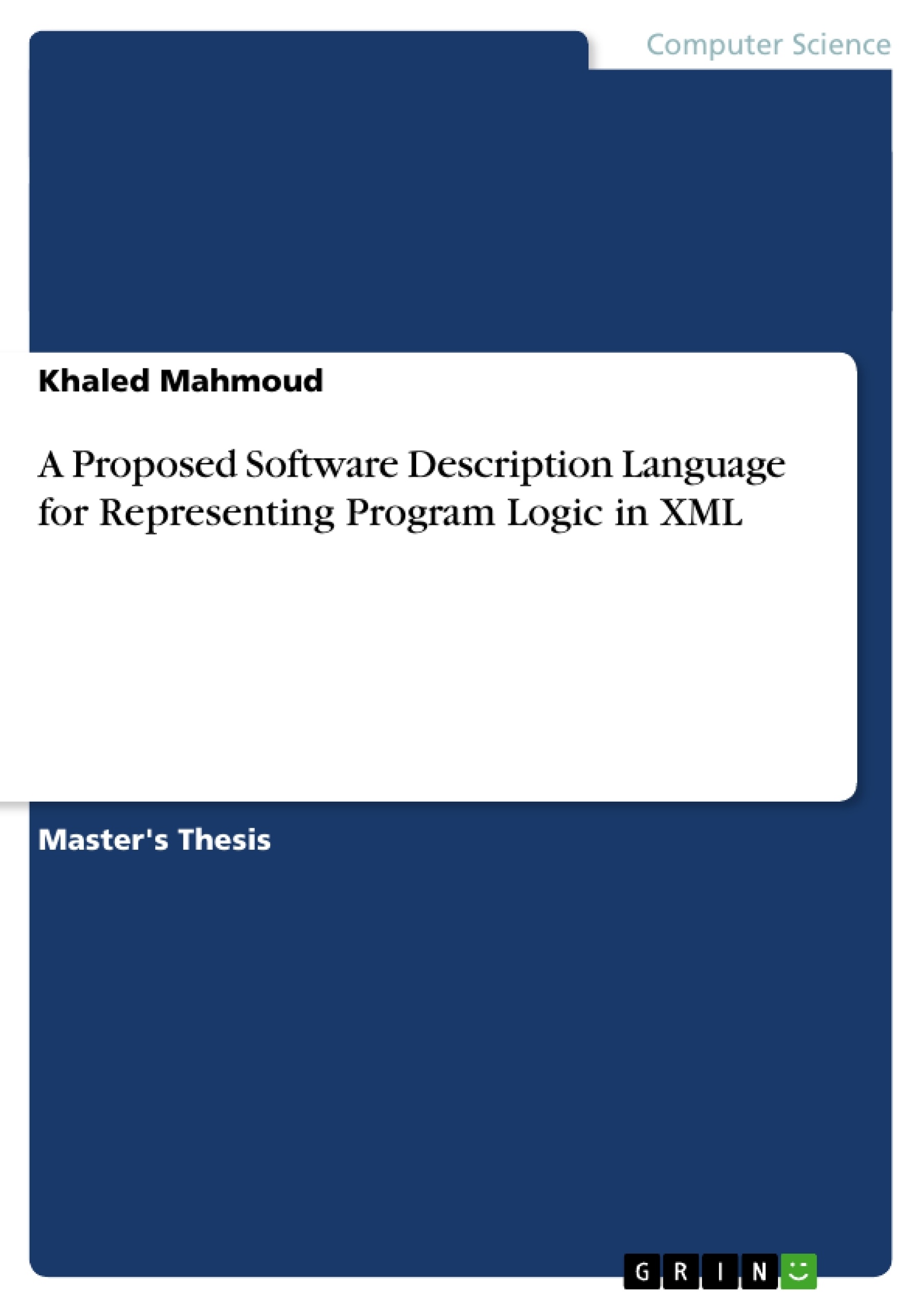This thesis proposes a software description language to represent the source code of
C++, Java, and VB.NET in the Extensible Markup Language. The similarity of
semantics between these languages enables representing the source code in a form such
that both, the source code and logic can be easily shared and reused between these
languages.
By performing semantic and syntactic comparison between C++, Java and VB.NET, the
proposed language has been designed to include the similar and identical features and
language constructs. For every adopted language construct, a corresponding construct in
the proposed language has been developed.
The validity of the proposed language has been investigated and proved theoretically by
conducting a semantic comparison between the three languages and experimentally by
developing applications to convert source code from Java into the proposed language
and from the proposed language into VB.NET. Validation cases have been designed to
include various programs such as sorting, searching and also to include the most used
programming constructs in the three languages. Source code of the validation cases
have been converted from Java into the proposed language, and from the proposed
language into VB.NET. Java and VB.NET programs of the validation cases have been
executed and results compared. The results were identical for all conducted
experiments.
The proposed language has some major benefits in the conversion between
programming languages as an intermediary language. It may also be used in the
integration between systems as it enables sharing of programming logic at runtime.
Existing integration technologies only enable the sharing of data between various
systems.
This thesis is not concerned with adapting programming languages libraries and
functions. Future work may extend the proposed language to adapt different features
such as pointers and multiple-inheritance into the proposed language.
Inhaltsverzeichnis (Table of Contents)
- Introduction
- Literature Review
- The Proposed Language: SDLX
- SDLX Structure
- SDLX Syntax
- SDLX Semantics
- SDLX Example
- SDLX Implementation
- SDLX Application
- Conclusion
Zielsetzung und Themenschwerpunkte (Objectives and Key Themes)
This thesis aims to propose a new Software Description Language (SDL) for representing program logic in XML, addressing the limitations of existing languages and providing a standardized approach. The key themes explored in this work include:- The need for a standardized and formal approach to representing program logic.
- Leveraging XML's capabilities for describing software structures and logic.
- The development of a comprehensive SDL with a defined structure, syntax, and semantics.
- The practical implementation and application of the proposed language.
- The evaluation and validation of the proposed SDL.
Zusammenfassung der Kapitel (Chapter Summaries)
- Introduction: This chapter provides an overview of the research problem, highlighting the limitations of existing SDLs and the need for a new approach. It introduces the proposed language, SDLX, and outlines the thesis's objectives and methodology.
- Literature Review: This chapter explores existing SDLs and their limitations. It examines previous research on representing program logic using XML and identifies key areas for improvement. This review provides the theoretical foundation for the proposed SDLX.
- The Proposed Language: SDLX: This chapter introduces SDLX, the proposed SDL, detailing its structure, syntax, and semantics. It includes a detailed discussion of each component and provides an example illustrating how SDLX can represent program logic in XML.
- SDLX Implementation: This chapter describes the implementation of SDLX, including the design choices and the tools used for its development. It outlines the key features of the implementation and the challenges encountered during the process.
- SDLX Application: This chapter showcases the application of SDLX in a real-world scenario. It demonstrates how the proposed language can be used to effectively represent program logic, highlighting its benefits and demonstrating its practical value.
Schlüsselwörter (Keywords)
This thesis focuses on the development and application of a new Software Description Language (SDL) for representing program logic in XML. Key terms include: Software Description Language (SDL), program logic, XML, representation, formalization, standardization, implementation, application, and evaluation.- Arbeit zitieren
- Khaled Mahmoud (Autor:in), 2012, A Proposed Software Description Language for Representing Program Logic in XML, München, GRIN Verlag, https://www.grin.com/document/209330



